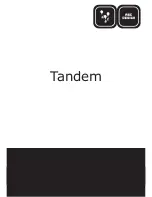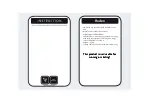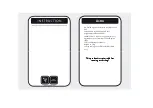
32
Troubleshooting
© 2011 Apollo Security Inc.
4
Troubleshooting
4.1
Communications
The first thing that must be verified at the card reader is the RS-485 communications. If the reader is unable
the communicate to the controller, most other functions will not work. Communications should be verified
observing the port activity LED (D15), which will blink when communication is active (see Part 2.4).
4.2
Reader / Keypad
The reader function can be verified after communications are functioning properly. The host system must be
configured for each of the readers on the AIM-4SL to be used, and with the correct card format. The card
format is determined by the actual cards that will be used. After configuring the card format at the host,
placing a card in front of the reader should generate an access message on the host computer. If the
message is “Access Denied” the reason for the message will indicate further steps to be performed. “Access
Denied – Wrong Facility Code” will also display the actual facility code on the card. This information should
then be entered to the host computer system. “Access Denied – Not in File” will display the actual card
number of the presented card. This card should then be added into the employee database of the host
system.” Access Denied – Access Level Error” indicates that the cards is entered into the system but the
Access Level assigned to the card does not allow access to the particular door at this time.
On readers with integral keypads, the keypad may be verified by setting the reader into the Card and PIN
mode. After presenting a valid card, the reader should flash the yellow LED (if installed reader supports 3
color LEDs). This indicates the reader is waiting for a Pin entry. Enter a valid PIN using the keypad and press
the “ENTER” key. Access should be granted.
4.3
Input Zones
All alarm inputs should next be verified. Opening the Door Contact input should generate an immediate
“Forced Open” alarm. Closing the Exit Pushbutton input should release the strike relay. NOTE: the Exit
Pushbutton input will not function if the reader interface is in tamper (Tamper Contact=Open) and also one
minute after the tamper condition is secured. The reader may also be configured (via the host) to not activate
the strike relay when the Exit Pushbutton is depressed. In all cases the reader should not report “Forced
Open” immediately after pressing the Exit Pushbutton. The Aux Alarm inputs (if used) can be verified next.
Some system will not allow use of the second Aux alarm. Opening the Aux alarm input should result in a
message on the host system. Unused Aux alarm inputs should be terminated.
4.4
Output relays
The internal strike relays should energize any time a valid card (or PIN) is presented and the message
“Access Granted” appears on the host. The reader may be set to the “Unlocked” mode at the host to
permanently energize the relay for test purposes. Any external, high-security, ADA-10.11 relay modules
should also be verified.
Содержание AIM-4SL
Страница 6: ...Part Introduction I ...
Страница 9: ...Part Hardware Layout II ...
Страница 19: ...Part System Wiring III ...
Страница 36: ...Part Troubleshooting IV ...
Страница 38: ...Part Specifications V ...
Страница 40: ...Part Supplemental Figures VI ...
Страница 41: ...36 Supplemental Figures 2011 Apollo Security Inc 6 Supplemental Figures ...
Страница 42: ...37 AIM 4SL Hardware Manual 2011 Apollo Security Inc ...
Страница 43: ...38 Supplemental Figures 2011 Apollo Security Inc ...
Страница 44: ...39 AIM 4SL Hardware Manual 2011 Apollo Security Inc ...
Страница 45: ...40 Supplemental Figures 2011 Apollo Security Inc ...
Страница 46: ...41 AIM 4SL Hardware Manual 2011 Apollo Security Inc ...
Страница 47: ...42 Supplemental Figures 2011 Apollo Security Inc ...
Страница 48: ...Part Table of Figures VII ...
Страница 50: ...Part Revision History VIII ...
















































